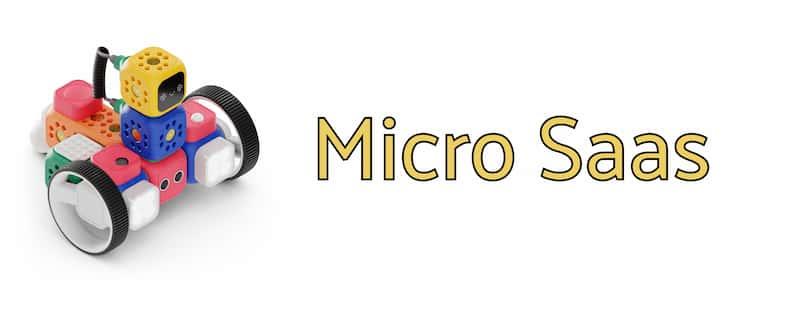
What Is Micro-SaaS?
If you’re an online entrepreneur (or an aspiring one), you’ve probably heard of the term “SaaS” before. SaaS stands for Software-As-A-Service. And it’s a hugely popular business model.
Companies like SalesForce, ClickUp, Pipedrive, and countless others, are all SaaS businesses. They offer software that you can use against recurring payments.
What Is Micro-SaaS?
In the last year or so, a term micro-SaaS surfaced. What is micro-SaaS? Enter Tyler Tringas. The entrepreneur said to have coined the term. In his own words, the micro-SaaS is:
“A SaaS business targeting a niche market, run by one person or a very small team, with small costs, a narrow focus, a small but dedicated user base and no outside funding. Hence, micro-SaaS.”
Targeting A Niche Market
The micro-SaaS is a booming trend in the digital industry this past year and is quickly gaining traction. Entrepreneurs are realising very small and specific gaps in niche markets offer a chance for lucrative gains. The value of any product is based on what value it brings to customers. What makes this more important to a micro-SaaS model is the fact that its strength lies in solving problems that would often go unseen by bigger, more established platforms.
For example, Storemapper; a Micro-SaaS that drives sales for e-commerce merchants by helping their customers find stores that stock their products. This project was created by Tyler Tringas, and we highly recommend that you check out the link to fully understand the value his service provides to his clients.
No Outside Funding
Another trait of the micro-SaaS is its lack of outside funding. Whether this is a good or a bad factor depends entirely on the individual. But here’s another fact about micro-SaaS; their narrow-focused service solution means fewer resources to build them, making them cheaper. You can have a minimum viable product or the MVP of your service prepared in under 24 hours (see under Benefits of running a Micro-SaaS business).
Besides this, all the revenue you generate from your service would go directly to you. Unless of course, you had overheads to pay? Here’s another quote from Tyler Tringas:
“… a software as a service business owned and operated by one person or a small team. These businesses are location-independent, high margin, low-risk with predictable recurring revenue. They are the lifestyle businesses of the future…”
One Person To Manage The Company?
Unlike the traditional model of SaaS that relies on funding to grow and a large team, the micro-SaaS is the perfect fit for an entrepreneur who wants to provide a service single-handedly. Of course, the first priority is to think of an idea that has marketable value to business owners or consumers.
With the right idea in mind, you could set up your service without having to put together a team, although it is always easier when there are more founders. And you don’t even have to know how to code, as you can use a no-code or low-code platform to build the first version of the app or software.
If you want to have more founders, but you don’t have any ideas who this could be, you could always use the SNAAP technique to network and tell your story.
Regardless of whether you need a software developer, you can operate a micro-SaaS anywhere in the world, even if there are other people involved in your project. Excellent news for digital nomads!
High Margin, Low Risk
No need to worry about paying wages or other overheads such as rent for office space, to distribute dividends to investors or pool massive amounts of money to get the software up and running. What could make micro-SaaS more financially enticing to digi-entrepreneurs? Perhaps its low running costs.
High margins indeed, but what makes it a low risk? Research forecasts suggested that 73% of small businesses planned to invest in SaaS solutions by 2020. The annual growth of the SaaS market is currently 18%. As of last year, the SaaS model was expected to bring in $105 billion. By 2022 this is forecasted to increase to $141 billion.
You don’t have to work hard to compete with the big guys. It pays to work smart. Micro-SaaS is about the depth of service rather than wide-reaching service.
Recurring Revenue
Which brings us to our last feature of the micro-SaaS, recurring revenues. Earlier in the post, we explored the idea that a product must be valuable to a customer for them to want to buy it. People make investments to improve something about their lives. Whether it’s removing their frustrations or relieving themselves of problems.
Micro-SaaS tackles problems unique to them. They feel that someone is finally listening to them (check out the five whys and putting $$ figures to the pain or frustration).
Where Can You Find More Information About Micro-SaaS?
We’d recommend checking out a few examples of micro-SaaS. Look for the reason behind the service they provide.
Additionally, making a visit to SaaS communities is always a good idea for keeping up to date with the latest news in the industry. It’s also an excellent source of inspiration and useful tips.


